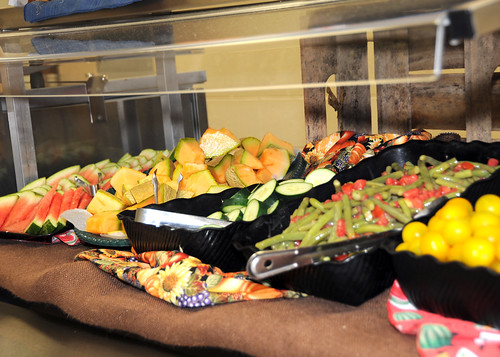
In 1996, only two schools nationwide bought food directly from farmers in their region through what are called farm-to-school programs. Today, these programs exist in over 2,000 U.S. schools – and a new pilot program in Michigan and Florida could send that number ticking quickly upward.
Farm-to-school programs are a win-win-win for America’s farmers and ranchers, our students, and our schools. Last year, members of USDA’s Farm-to-School team visited fifteen schools across the country to check out their programs and were amazed by what they saw: “Kentucky Proud” signs posted next to locally-sourced food in the cafeterias of Montgomery County, KY public schools; twenty local products for lunch at schools in the Independence, IA Community School District; students at Harrisonburg, VA public schools who knew the name of the farmer supplying lettuce for their salad bar.
By partnering with farms in their area, these and other schools across the nation have been able to increase the quantity of fresh, healthy and locally-grown food available to students. They are also supporting the community by buying from farmers who work local land and employ local residents. Teachers love farm-to-school arrangements too: in schools that implement them, local products and visits to farms have been incorporated into science, math, and health classes.
USDA’s Agricultural Marketing Service and Food and Nutrition Service are moving full speed ahead to take advantage of what was learned on the Farm-to-School team’s visits last year. This fall, the agencies will launch a pilot program to help schools in Florida and Michigan purchase more produce from local farmers using some of their federal school meal funding. USDA will solicit suppliers later this year and offer the list of suppliers to schools. Schools in Michigan and Florida will then be able to contract with local suppliers in 2012. You can learn more how it will work here.
This pilot program will help our schools take advantage of another recent USDA accomplishment. As directed by Congress, USDA issued new rules in April that allow schools to exercise what’s called “geographic preference” in the contracts they sign for school food procurement. For the first time, schools can specify a desire to purchase and serve food grown by farmers in their community.
We’re seizing this opportunity to support America’s farmers and improve the health of our kids. Schools in Michigan and Florida will test new ways to facilitate Farm-to-School relationships through the AMS/FNS pilot project; schools in other states, stay tuned!
Resources for schools in any state interested in Farm-to-School are available on our Farm-to-School website. Check out the grants and resources section to learn more about the programs available to support your efforts.
